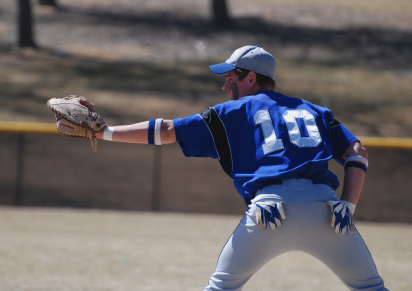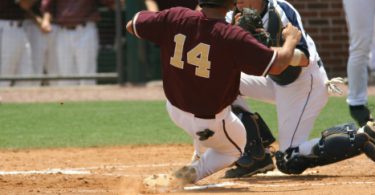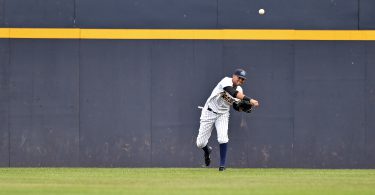The Situation:
It’s a 1-0 game in the bottom of the 9th inning. The visitors have the lead, but the home team is threatening with a runner on second, and two outs. The batter, a left-handed hitter, has a 1-1 count against the hard throwing right-handed closer.
The Play:
The pitcher delivers a fastball over the plate and the batter gets around the ball, hooking a top-spin chopper towards the 4 hole. The ball has an incredible amount of spin, but doesn’t have the pace to sneak through. As the 1st baseman approaches the ball, he begins to realize that there is no way for him to get the predictable long-hop or short-hop. He prepares for and gets the worst-case scenario, a wicked in-between hop that takes its final bounce 5 or 6 feet in front of him, before rocketing up about belly-button high. Instead of trying to field the ball cleanly with his glove, the first baseman makes himself big and ‘bodies up’ on the ball. The ball bounces off his frame and scoots away on the infield.
The Outcome:
With the ball on the infield, the runner from second is forced to stop at third base, while the batter makes it to first base uncontested and easily. The first baseman, unable to record the final out gets an error, and the winning run stands at first base.
What Went Wrong:
This is a Think the Game that came to life on baseball’s biggest stage, the 2016 World Series. Bottom of the 9th with the winning run at the plate, these are the type of situations that everyone dreams of. Cleveland first baseman Mike Napoli was probably not too excited when he realized how difficult of a play he was going to have to make, but what could he have done differently?
Despite being charged with an error, Napoli actually did everything right in this situation. It’s a classic example of how process doesn’t always match up with results. Sure Napoli didn’t make the play to end the game like he wished, but his decision to get in front of the ball and ensure that the ball stayed on the infield was A+. Goal number one when there is a low percentage play on the infield late in the game with the tying run on base is to make sure the ball stays on the infield and the lead is preserved.
Had Napoli tried to pick the ball on the backhand (a low percentage play given the pace of the ball and the top spin hop, even for a Big Leaguer), it’s quite possible that the ball would have ended up in the outfield and allowed the runner from second to score. His decision to body up and ‘play the percentages’ preserved the lead, despite not ending the game. As it would turn out, the next batter made an out to end the game, and Napoli’s unselfish decision paid off with the ultimate prize, a World Series win. Now that is thinking the game!







